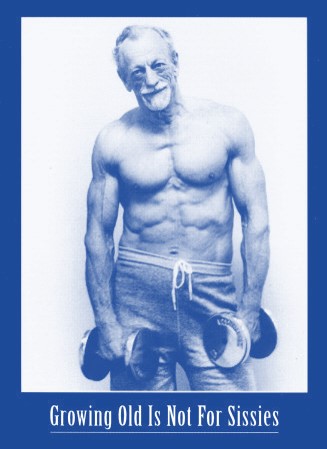Staying Ahead of My Aging Spine and Joints with Platelet Growth Factors
Like many older guys entering my 50s, I’m trying to keep my activity levels high. I discuss all of this in our practice’s e-book, Orthopedics 2.0 (in the Living 2.0 section). Since I like lifting heavy weights and hard pulse rate driven cardio (I have expectations for my heart rate at each leg of the work-out), I need to keep ahead of my aging body. If I could put together a formula of things you can do to stay in optimal health as you age, it would be:
1. Workout like a dog. I can’t emphasize enough that if you have the means, getting a personal trainer to at least show you the ropes is money well spent. This is because you first need to learn what a high intensity work out looks like. 95% of the people I see in the gym are working out like zombies. This doesn’t have to take a ton of time, as hitting it hard for 30 minutes is better than an hour sauntering on the elliptical like you’re out for a brisk summer stroll.
2. Stay on top of your hormones as you get older. See the book.
3. Stay on top of your diet. Again, see the book.
4. Avoid big orthopedic surgeries. While sometimes they can’t be prevented, in my clinical experience (and based on some of the emerging research), for each knee arthroscopy or back surgery, there is a dramatic toll on the body that will make it more likely that you aren’t able to keep up as you age.
5. Stay on top of your body’s signals. Staying ahead of aging requires really listening to your body. Regrettably, this is also the area in which most people fall down often causing their worlds to explode. I see them as patients wondering how they went from highly active to hurting and injured, unsure of the path forward after their knee or ankle or shoulder gives out for good. You must first understand what’s going on. This means that the “no pain-no gain” mantra gets thrown out the window.
I’d like to focus on this last part this morning. To stay in good shape, you have to become an astute reader of subtle signals to keep ahead of catastrophic injury. Let me give you examples from the last few weeks for my body. Three weeks ago I began to notice that my left quad was getting what I call, “wonky”. Meaning that it had a slight lack of coordination during quick turnover exercise. When that happens, my back isn’t hurting, but I know that’s where this is coming from. Why? The upper lumbar nerves in my back are irritated which shuts down my quad. As the weeks wore on, I also noticed that both knees (especially my left) were getting a bit more achy than usual. Finally, I began to notice the slightest bit of a “nervy” sensation when getting out of my SUV and brushing the back of the calves against the car. I also know from experience that this is caused by the S1 nerves in my back. Finally, this past week my back began to get achy. Had I not known that my low back nerves had been complaining for weeks (only presenting as my quad, knees, and calves), I would never had put these episodes together. So what did I do? Rather than waiting for the lack of coordination in my left quad to fry my knee joint, or the irritated nerves in my back to take the stabilizer muscles completely off-line and have this result in a major low back blow-up, I got the following on Friday:
1. Regenexx-PL-Disc to the left L3-L4 and bilateral S1 areas
2. Regenexx-SCP into my bilateral knee joints
So how did it feel? My back didn’t really complain noticeably after the injection. My knees were swollen and achy for the rest of Friday and all through Saturday, but they are returning to normal today.
What do I expect all of this will do? Get my quad and S1 nerves back on line, protecting my knee joints. In addition, the SCP will likely ramp up repair mechanisms in the knee joints, reducing the impact of wear and tear on my knee joints.
The upshot? Becoming a student of your body’s signals in a critical part of staying very active as you move into your 40s, 50s, 60s and beyond. In this case, these little signals can tell you how to get ahead of maintenance and intervene in minimal ways to keep all the parts in tip top shape!

NOTE: This blog post provides general information to help the reader better understand regenerative medicine, musculoskeletal health, and related subjects. All content provided in this blog, website, or any linked materials, including text, graphics, images, patient profiles, outcomes, and information, are not intended and should not be considered or used as a substitute for medical advice, diagnosis, or treatment. Please always consult with a professional and certified healthcare provider to discuss if a treatment is right for you.

